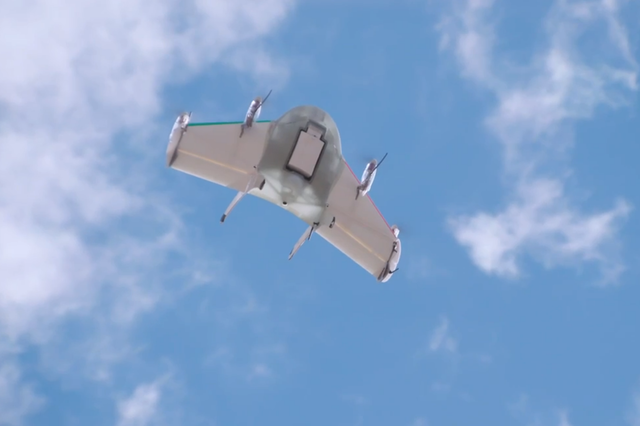Google's Project Wing is a secret, drone-based delivery system
Google has been working on self-driving cars for some years now, but the company has just revealed that it is working on yet another ambitious and autonomous vehicle project. According to the BBC and The Atlantic, the secretive Google X team has been working for two years on Project Wing, a drone-based delivery system that sounds a lot like the Amazon drones that CEO Jeff Bezos announced last year.
However, while Google says these vehicles can be used for delivering goods, the project's main focus doesn't appear to be appeasing shoppers who need things right away. Instead, it sounds like Google envisions using these drones in disaster relief scenarios — they could theoretically deliver supplies to areas in need. "Even just a few of these, being able to shuttle nearly continuously could service a very large number of people in an emergency situation," said Google X's Astro Teller to the BBC.
Despite that noble goal, Google did say in The Atlantic that these vehicles can also be used to deliver goods to buyers, just as Amazon hopes to do. The company now has dozens of people working on the project (more are expected to join soon) with the goal of delivering things to people quickly via these small, "self-flying vehicles."
The vehicle itself consists of four electrically-driven propellers with a wingspan of about five feet; it weighs just under 19 pounds and can take off and land without a runway. According to the BBC, the entire weight of the craft and the item it is delivering is only 22 pounds — which means these drones won't be delivering an Xbox to your front door. Its computer is near the tail section, while the power is near the front of the plane. Onboard is GPS, cameras, radios, and an inertial measurement sensor that's made up of accelerometers and gyroscopes to help the craft determine how it's positioned.
GOOGLE AND AMAZON ARE BOTH STAKING CLAIMS IN THE DRONE DELIVERY SPACE
While developing the project, Google found that people wanted to grab the packages from the drone, which could have injured them because of the tiny propellers. That's where the design for the package delivery by string came from, which was designed by a one of Google's mechanical engineers. The string is actually fishing line, while the small grip is called the "egg."
Google envisions a system that is controlled in part by computers as well as people. Controllers will be able to oversee what the drones are doing and take control. That could be useful in cases where packages could get stuck. And Google says it plans to use some of those human interactions to help improve the automated software, like it's done with its self-driving car program.
Beyond Astro Teller, Google recruited Nick Roy from MIT to lead the project; he took a two-year sabbatical to help get it off the ground. But Google's been working on this for some time — Project Wing was originally envisioned as a way to deliver defibrillators to people who were having heart attacks, but Google ran into issues with that idea because it would involve being integrated into 911 and emergency services. Of course, the company still faces plenty of challenges getting it off the ground in the US — in fact, the company has mostly been testing Project Wing in Australia, which has more "progressive" ideas about the use of drones compared to Google's home country.
Indeed, Google's drone program might be further away from reality than its self-driving cars — but it sounds like the company is going to use all of its considerable power to push the initiative forward, including getting in with the regulatory boards that'll ultimately decide whether Google's crafts can take to the skies. It's gonna take conversations with the public and with regulators. But so far in the conversations we've had over the last two years, and more intensely over the last couple months with regulators, I'm cautiously optimistic that everyone wants the same thing," Teller said to The Atlantic.

No comments:
Post a Comment